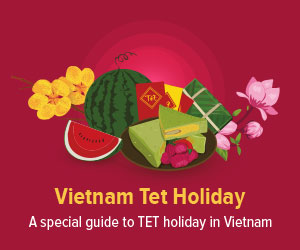Use of Rice
The value of rice, in a Vietnamese's opinion, cannot and should not be limited to the economic realm.
The value of rice, in a Vietnamese's opinion, cannot and should not be limited to the economic realm. Even though it is indeed a staple crop cultivated annually throughout the country, and plays a vital role in the survival of a substantial portion of the population, as well as for export, rice ranks higher than any ordinary food. Photo: baocongthuong.vn
Photo: baocongthuong.vn
The mentioning of rice to any Vietnamese, particularly one that resides far from the homeland, raises the feelings of nostalgia and closeness. Part of what enhances such familiarity originates from the daily use of rice in meal preparation, notably lunch and dinner, when it is served, boiled or steamed, along with other sources of protein. Furthermore, similar to com nam (rice balls pressed to a cylinder-like form that reduces taking space in luggage – a traveller's friend), rice has been a loyal companion to Vietnamese for a long time.
Rice Production
Apart from its historical significance, equivalent to the Western domestication of wheat and barley - which marked the beginning of civilization in general; rice also appeared in legends. It was employed by Hung King's eighteenth son (more Vietnam's Early History) in his invention of banh chung (a square-shaped cake consists of glutinous rice, pork and ground green beans) and banh day (a round-shaped cake made of glutinous rice) as offerings for ancestors. Photo: thuonghieucongluan.com.vn
Photo: thuonghieucongluan.com.vn
Until today, there is always a reserved place for them on the family altar at Tet or death anniversary, despite the introduction of more exotic cuisine by globalization. Rice is also taken for granted in Vietnamese daily life. For example, when someone asks whether his friend or family has eaten, he asks “Have you had rice yet?” (Anh da an com chua).
Vietnamese Rice
Rice, therefore, brings the familiarity of home. As the saying goes, “rice is mother” (“com te me ruot”); it touches one's heart with trust and welcoming warmth. It is perhaps a Vietnamese version of the idea “there's no place like home”: embedded in the tiny, white grains is the history and cultural roots of an entire nation.

Top 5 Side Dishes to Serve with Xôi (Vietnamese Sticky Rice)
Most common add-ons for Vietnamese Xoi.

Different Types of Vietnamese Sticky Rice (Xoi)
It will be a big miss if you come to Vietnam without trying “xoi”.









